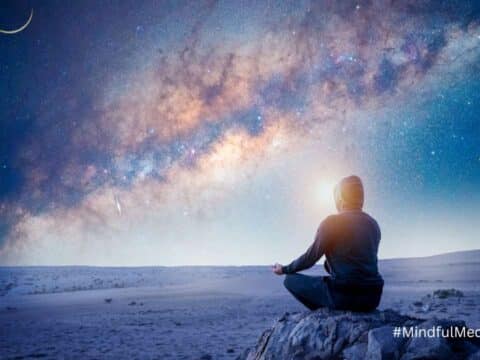Osteoporosis is a disease of the bones and there are some things you can do to prevent it. These include a healthy lifestyle. A healthy diet is important for maintaining bone health, and regular exercise or even yoga will help strengthen your bones.
A woman’s bone density peaks in her mid to late twenties, but it declines rapidly after the menopause. This is because the female body goes through a series of hormonal changes that accelerate the process of losing bone mass. When this process begins, the bone loses calcium faster than it can be replaced, resulting in thinning bones.
Podcast
People with osteoporosis have a higher risk of bone fractures than people without the condition. Fortunately, osteoporosis is not a life-threatening disease, but it is a progressive disease that can go undetected for years.
Osteoporosis is most commonly associated with hip and spine fractures. But it can also affect many other parts of the body. It can affect your posture and your ability to walk.
Once you have suffered a fracture, there is an increased risk that you will suffer another one within a year.
Who is at risk of osteoporosis?
If you think you are at risk of osteoporosis, talk to your doctor. A simple DEXA scan can help identify your risk factor for osteoporosis.
Risk factors include being female, being older, having a direct relative with osteoporosis, and taking corticosteroid medications for a long period of time. Inflammatory bowel diseases such as Crohn’s disease or coeliac disease can also increase the risk.
Bone structure plays an important role in the risk of osteoporosis. The stronger your bones, the lower your risk. People with thin bones have bone loss more quickly. Some conditions, such as hyperthyroidism, adrenal gland or parathyroidism, can increase the risk of osteoporosis.
A sedentary lifestyle and excessive alcohol consumption are risk factors for osteoporosis. A healthy diet and exercise are key factors for bone health. Weight-bearing exercises are especially important to maintain balance and prevent osteoporosis.
Yoga for osteoporosis?
Yoga is touted as having many health benefits, including increased strength and flexibility. It is also known to reduce anxiety and stress. But how exactly does yoga affect your bones? A leading expert on the subject, Dr Loren Fishman, has conducted several studies to determine the benefits of yoga on bone health.
Practising yoga poses can be helpful for people with osteoporosis. However, avoid exercises like crunches or sit-ups, which can lead to vertebral fractures. Instead, start with gentle exercises like the tree pose.
Inverted postures like the plough pose are not safe for people with osteoporosis. In the Plough Pose, you lift your hips in an upward direction. The extreme flexion of the cervical and lumbar spine in the final position can lead to a fragility fracture. Therefore, you should avoid many inversion poses.
More bone mass through yoga?
Osteoporosis is a major health problem in women. In the United States alone, it causes about 300,000 hip fractures and 700,000 spine fractures each year.
Exercises like yoga can help build bone mass and slow the progression of osteoporosis by increasing bone density.
However, there are few studies that have examined the benefits of yoga for osteoporosis. A small study published in 2016 found that yoga can improve bone density in osteoporosis patients without causing pain.
People who have osteoporosis should consult their doctor before starting a new exercise programme. There are many types of yoga for people with osteoporosis. The key to yoga for osteoporosis is to be safe and put little stress on the bones.
Yoga poses for strong bones
People suffering from osteoporosis should consult their doctor before starting a new exercise programme.
Tabletop pose (Bharmanasana)
The yoga pose Table Pose is a basic yoga pose that improves balance, coordination and posture. It is suitable for beginners and advanced practitioners and is often modified for gentler yoga sequences.
It also strengthens the arms and improves overall body strength. It is also suitable as a preparatory pose for standing balances. You should be able to hold the pose for five to six breaths.
Table pose is not an easy pose for beginners, but even beginners can try it! Start on your hands and knees and then lift your right leg until it is parallel to the floor. Then extend your left arm forward. The aim is to get a straight back and a strong core.
Once you have mastered the basic yoga pose, you can move on to more advanced floor postures. Table pose is an excellent addition to your yoga practice. It allows you to reap the benefits of many classic yoga postures while avoiding the risk of injury.
As with any new pose, it is important that you adapt the pose to your body weight and comfort level.
Always seek advice from an experienced teacher before starting any exercise programme. Be sure to remember that yoga requires a lot of strength, stamina and time.
Locust Pose (Shalabhasana)
The locust pose is an extraordinary posture in yoga. It requires the stretching of the chest, thighs, hips and abdomen. It should be performed with a rhythmic breathing pattern. The benefits of this pose are numerous, including strengthening the centre of the body. It keeps the spine long and supple while you use your body weight to stabilise it.
For best results, practise this pose for at least five minutes a day. The pose has many benefits, but beginners should focus on stretching the spine.
Do not strain your lower back by trying to raise your head or pelvis too much.
The locust position is also a good way to exercise the pelvic floor muscles. These muscles run from the pubic bone to the base of the spine and support the pelvic organs.
This pose helps to activate the Vajroli Mudra (Sun Sign) and strengthen the lower back. In addition, this pose trains the muscles of the thighs and buttocks.
This pose improves your lower back, shoulders and abdominal muscles. It also improves your circulation and relaxes the nervous system. It also helps to improve your digestion. It also helps tone your body and calm your mind.
Chair Pose (Utkatasana)
Chair pose is a pose that helps you to have a stretched and balanced back. It trains the sit bones and the lower back. It improves the flexibility of the spine and helps you relax and calm the mind. It also cleanses the internal organs and improves digestion.
The most important thing is that your body weight or spine does not move in this position. If you cannot keep your balance, you can always support yourself against a wall. This will help you stay in the pose longer.
In this pose you should bend your knees and lower your hips. Make sure your shoulders are away from your neck and relax.
You should also tense your core to hold the position. Try to hold this pose for at least 30 seconds and then release.
This pose is challenging and mentally demanding. The aim of this pose is to engage all the muscles in your body, which helps your mind to stay in the present moment. It also requires a lot of practice to perfect.
Tree Pose (Vrkasana)
Tree pose is a posture that helps the practitioner maintain balance. You should hold the pose for 30 seconds. This yoga pose is good for the back and strengthens the gluteal muscles, quadriceps and hamstrings. It also stretches the chest well.
Yoga practitioners can use this pose to relieve back pain and tension. It is also a good stretch for the legs and hips. When practising Tree Pose, remember to use a mat to avoid injury.
Warrior 1 Pose (Virabhadrasana 1)
Yoga Warrior Pose 1 is a powerful pose that opens the hips and shoulders. It is often referred to as devotional warrior pose. The pose can be challenging for most yoga practitioners and is great for strengthening the hamstrings and quadriceps. It also helps to develop humility and devotion to higher powers.
The starting position for this pose is a variation of downward looking dog. It is generally performed with the left foot flat on the floor.
The execution of the Yoga Warrior Pose consists of tensing the quads and lengthening the spine. In this position the front knee must be parallel to the floor. The thigh should be raised so that the knee does not reach further than the toes. The back foot should be placed so that the stance is stable.
Warrior Pose 1 is a powerful basic pose for yoga practice. It strengthens the shoulders, thigh muscles and spine and helps to develop balance. It also stretches and energises the whole body.
What to avoid if you have osteoporosis
One of the best things you can do to avoid osteoporosis is to get plenty of calcium-rich foods. Increasing your intake of dairy products, milk and eggs can help, but you should avoid too much red meat or processed meat.
This can leach calcium from your bones. A study published in the journal Advances in Nutrition found that avoiding red meat, processed meat and refined grains leads to better bone health. Instead, focus on fruits and vegetables, low-fat dairy products, and nuts and legumes.
Exercise is a good way to strengthen your bones. Although adults don’t benefit as much from exercise as children, it can still have a moderate effect on bone density.
Regular exercise can also help maintain strength that has been lost over time. It is also a good idea to avoid smoking and drinking alcohol.
These activities can also harm your bones. Talk to your doctor about your health and possible medications for osteoporosis.




